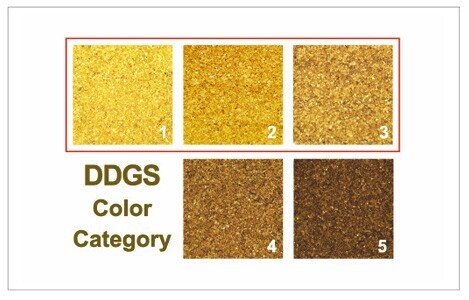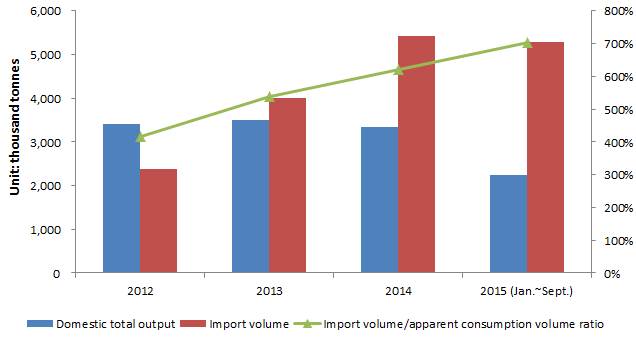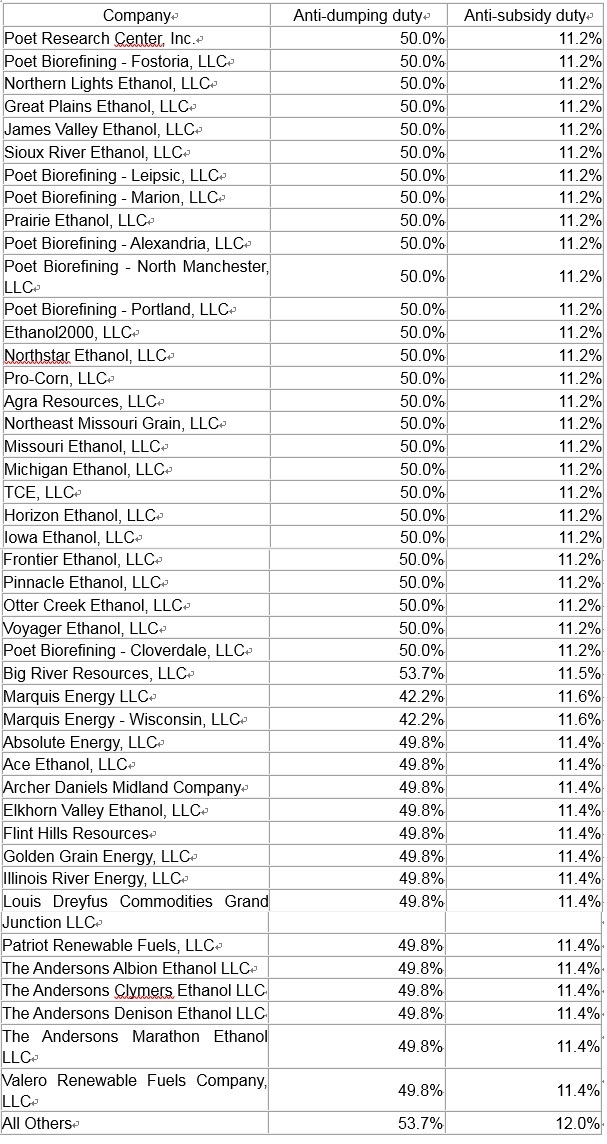The
MOC finalized the anti-dumping and anti-subsidy duties on imported DDGS from
the US. CCM believes, that this move will further reduce Chinese DDGS import
volume, strengthen demand for corn and soybean meal, and stimulate the supply
of alcohol.
On
11th Jan., 2017, the Ministry of Commerce of the People's Republic of China
(MOC) announced that the US was ruled to have dumped DDGS into China, which has
caused substantial damage to the Chinese DDGS industry. Therefore, China
decided to respectively impose 42.2%-53.7% and 11.2%-12.0% of anti-dumping and
anti-subsidy duties on US DDGS for 5 years, starting 12 Jan., 2017.

Source: Baidu
In
2016, China launched anti-dumping and anti-subsidy investigations into American
DDGS:
-12th
Jan. - The MOC announced that it had decided to conduct an anti-dumping
investigation into American DDGS
-23th
Sept. - The MOC made an initial ruling that the US has dumped and subsidized
its DDGS into China. It subsequently required importers to pay an anti-dumping
deposit and an anti-subsidy deposit at 33.8% and 10.0%-10.8% respectively.
Note: Deposit amount = (duty-paid value assessed by the customs * deposit rate)
* (1 + import-related value-added tax rate)
-2nd
Aug. - The MOC held a hearing on whether to launch an anti-dumping and
anti-subsidy investigation on DDGS, at which the US and China debated whether
the US dumps DDGS into China
Actually,
in early Dec. 2010, China had launched anti-dumping and anti-subsidy
investigations into American DDGS. However, the investigations were terminated
due to various factors. At that time, China didn't form a definite conclusion
on whether the US dumps DDGS into China.
As
the largest DDGS importer in the world, China mainly imported DDGS from the US.
Compared to the DDGS made-in-China, American DDGS enjoys both a lower
price and higher quality. Coupled with the surging domestic corn price in the
past few years, import volume of DDGS rose significantly. According to China
Customs, import volume reached 6.82 million tonnes in 2015, up 26.1% YoY. In
addition, the proportion of apparent consumption volume of imported DDGS
climbed 70.2% in Jan.-Sept. 2015 from 41.6% in 2012, according to the MOC.
DDGS
is a by-product of corn alcohol, which can be used as a raw material in feed to
provide energy and protein. Therefore, DDGS is a good substitute for corn and
soybean meal. In 2016, China's corn price slumped and dragged down the domestic
DDGS price, resulting in sharply falling import volume of DDGS. According to
China Customs, the country imported about 3 million tonnes of DDGS in Jan.-Nov.
2016, down 46.8% YoY.
Output,
import volume and apparent consumption volume of DDGS in China, 2012-2015
(Jan.-Sept.)

Source: MOC
It
is noteworthy that China made an initial ruling on American DDGS in Sept. 2016,
caused many importers have slowed down their imports. Some feed enterprises
said that they’re now targeting domestic DDGS suppliers or homemade soybean
meal for raw materials. It is predicted that the final judgment would further
suppress DDGS import volume. CCM thinks that this may help domestic industries
in a number of ways:
1.
Increase corn consumption and reduce corn inventory
At
present, China holds a huge corn inventory – 230 million tonnes. Additionally,
the cancelation in 2016 of the purchase policy of corn for temporary storage affected
corn sales seriously in some producing areas, such as Heilongjiang Province.
2.
Raise domestic soybean meal prices
The
largely reduced DDGS import volume will strengthen demand for soybean meal. The
domestic soybean meal price will keep rising.
3.
Increase supplies of alcohol
The
strengthened demand for domestic DDGS will stimulate domestic production. The
supply of alcohol will further increase in the future.
China's
anti-dumping and anti-subsidy duties on American DDGS companies, Jan. 2017

Source:
MOC
About CCM
CCM
is the leading market intelligence provider for China’s agriculture, chemicals,
food & ingredients and life science markets.
Do
you want to find out more about the Corn market in China? Try our Newsletters
and Industrial Reports or join our professional online platform today and get
insights in Reports, Newsletter, and Market Data at one place.
For
more trade information of corn, including Import and Export analysis as well as
Manufacturer to Buyer Tracking, contact our experts in trade analysis to get
your answers today.